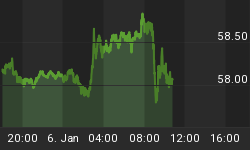Market attention returns to the US ahead of this morning's advanced (first estimate) Q3 GDP report expected to show 2.0% growth following 2.6% in Q2 and 5.6% in Q1. It would be the slowest quarterly growth since 1.8% in Q4 2005, when economic activity was temporarily hit by Hurricanes Katrina and Rita. Although the report will be preliminary--without the complete data for the quarter yet in hand -- it holds considerable weight in shaping expectations in the treasury market for future monetary policy action due to the sharp slowdown in growth taking place since Q1. In other words, market participants who are not yet convinced that the Fed is done tightening after Wednesday's FOMC policy statement, may revise their expectations due to the sharp slowdown in growth. An expected cooling in the inflation measures of core PCE price index to 2.5% from 2.7% should also help contain inflationary nervousness.
But one possible reason that a 2.0% reading may not be especially negative for the US dollar is that the bulk of the Q3 slowdown is seen emerging from a double digit drop in residential investment and from a the rise in the trade deficit -- resulting from high US oil imports. Meanwhile, the all important US consumer is expected to remain largely unhinged, showing a rebound of 3.0% in the personal consumption expenditure component from 2.6% in Q2's GDP report. Thus, the dollar could remain stable as traders argue that GDP report suggests a soft landing in the US economy that will keep the Fed to remain on hold into Q1 2007.
The other data item of the day is the final October University of Michigan sentiment survey, expected to have edged up to 92.7 from 92.3. FX and bond markets will focus on the 1-year inflation expectation component, which has slowed in the last 2 months (3.8 in August, 3.1 in September and 2.9 in preliminary October).
Yen drops vs high yielding USD & AUD after CPI
The yen is pressured against the high yielding USD and AUD after lower than expected Japanese CPI further dispelled speculation of rate hike this year. Core CPI rose 0.2% in the year ending in September, less than the 0.3% expected by the market and less than the rate of last 4 months.
USDJPY is seen stabilizing around the 118.45-60 range, but we can see a bounce towards the 118.80 resistance in the event that Q3 GDP matches expectations. A figure of more than 2.2% in GDP coupled with stronger than expected consumer sentiment may be the impetus need to see 119.10. Disappointing US data could send USDJPY back towards the lows of 118.30, but ensuing carry trades will solidify that foundation.
Euro consolidates despite strong M3
Euro began retreating off its highs in Asian trading but is now stabilizing after unexpected acceleration in Eurozone M3 money supply showed a 8.5% increase September from 8.2% in August. Consensus forecasts expected an 8.0% rise. The ECB's preferred 3-month average of M3 annual growth rose 8.2% in the July-September period beating expectations of a 8.0% rise and the 8.1% in June-August. Although money supply remains a reference indicator in the ECB's policy goals, it does not command the same market scrutiny as does CPI.
Nonetheless, the M3 figures bolster the argument for a 25-bp rate hike in December to 3.50% especially after this week's stronger than expected IFO business sentiment survey from Germany and hawkish comments from ECB president Trichet. We do not think the central bank will tighten in November mainly due to the retreat in energy prices off their highs and the ECB's preference to monitor growth developments for one month before acting on policy. The December rate policy decision will also coincide with the ECB's semi annual growth and inflation forecasts. Having said, next week's ECB press conference will be crucial in shaping market thinking vis-a-vis the December meeting and further policy action in Q1 2007.
All eyes are on the 1.2715 trend line resistance holding since August 21, a break of which carries the potential to call up 1.2750 and the 1.2764 high of October 3. But momentum indicators suggest a topping out in the pair at just below 1.27. We see profit taking challenging the 1.2640 support, followed by more stable foundation at 1.2620.
Aussie breaks 76.50
AUDUSD's 2 week run hits a fresh 6 1/2 high at 76.64 on a combination of reassessment in Fed policy and more importantly the reemergence of carry trades as the higher yielding Aussie is expected to accumulate further yueld luster next month with a 25-bp rate hike from the RBA. Expect resistance at 76.75 to act as a temporary cap on an emerging flag with support lifted to 76.25.
















